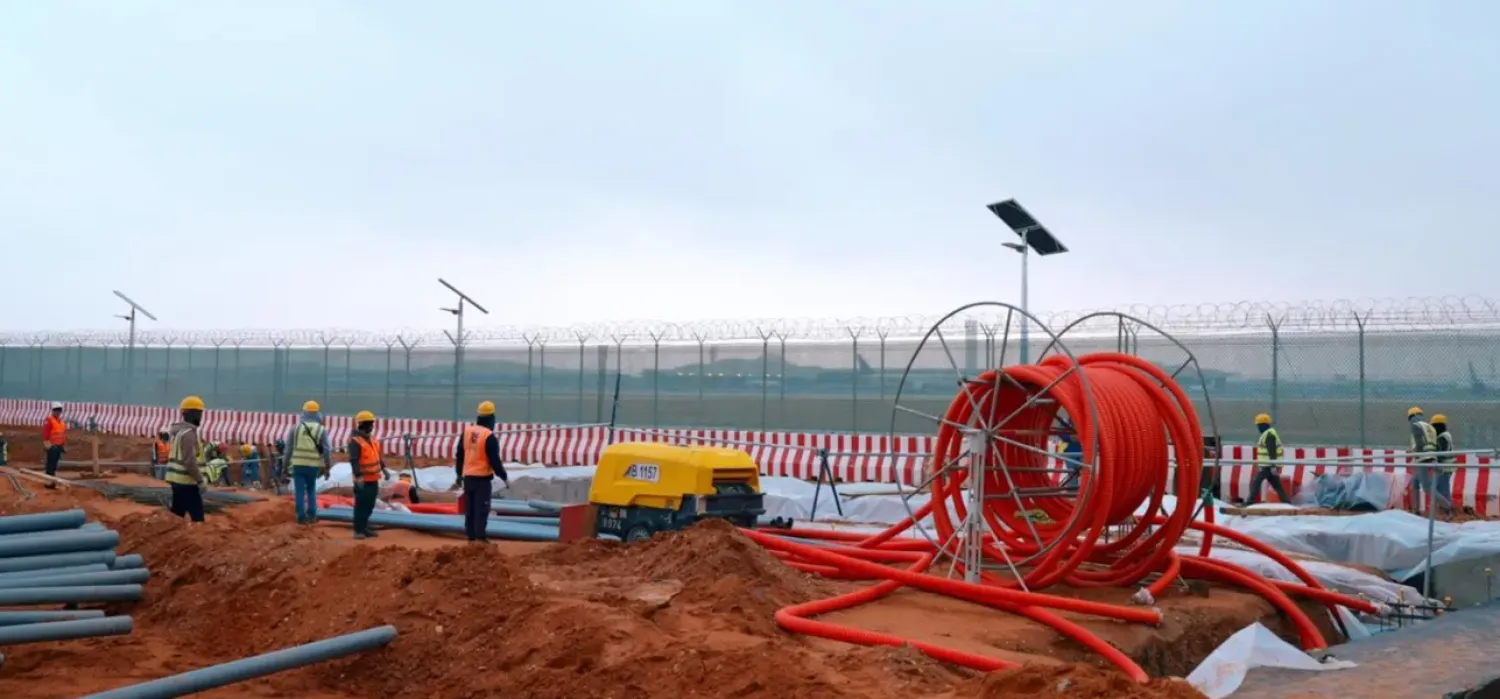The mining sector in Saudi Arabia is undergoing a significant transformation that will transform it into a key pillar for the nation's economic diversification efforts outlined in Vision 2030.
The Kingdom's abundant mineral wealth, estimated at SAR9.4 trillion ($2.5 trillion), presents a crucial opportunity to expand non-oil revenue streams alongside the oil and petrochemical industries, reported the Saudi Press Agency on Wednesday.
To accelerate exploration and development, the Kingdom has increased its estimated mineral wealth and invested SAR682.5 million ($182 million) in exploration incentives by the end of 2023. This commitment was reinforced by the issuance of 152 new industrial licenses by the Ministry of Industry and Mineral Resources in January 2024 alone. The licenses include 20 for non-metallic mineral products and 19 for activities related to manufacturing formed metal products, excluding machinery and equipment.
According to a report by the National Industrial and Mining Information Center, the 152 industrial licenses issued since the beginning of 2023 contributed to bringing the total number of operating and under-construction factories in the Kingdom by the end of January 2024 to 11,672. These factories represent a combined investment of SAR1,539 trillion.
Recent discoveries, including significant gold reserves along a 100 km stretch in the Mansoura and Masara mines, further emphasize the vast untapped potential of Saudi Arabia's mineral wealth. These mines boast a projected annual production capacity of 250,000 ounces of gold.
The ongoing transformations in the mining sector reflect progress toward achieving the comprehensive strategy of the sector outlined in Vision 2030, which aims to unlock the full potential of the sector, driving economic and social growth, in line with the Kingdom's ambitious goals for 2030.
Vice Minister of Industry and Mineral Resources for Mining Affairs Eng. Khalid Al-Mudaifer elaborated on the government's initiatives to propel the mining sector forward. The initiatives include implementing programs to create a business-friendly environment for mining development, enacting the Mining Investment Law to streamline the licensing process, minimizing the environmental impact of mining operations, maximizing benefits for local communities, and launching a comprehensive geological survey program to gather important data.
The Saudi Industrial Development Fund plays a crucial role, financing advanced exploration and mining projects, including covering up to 75% of eligible project costs, Al-Mudaifer said.
The fund also provides financing solutions for mid-tier and lower-end manufacturing, small and medium enterprises (SMEs), digitalization efforts, renewable energy projects, and initiatives to increase local sector content.
The Ministry of Industry and Mineral Resources has released its monthly report, providing key industrial indicators that highlight the state of industrial activity in Saudi Arabia.
The report emphasizes the significant changes in new industrial investments and presents data related to the mining sector until December 2023. Notably, it included the number of operating factories, which rose 10% in 2023, to 11,549, compared to 10,518 in 2022.
The report also shows an increase in new industrial licenses (1,379 in 2023) with a total investment exceeding SAR81 billion. Additionally, 1,058 new factories began production last year, representing investments of SAR45 billion.
To achieve economic transformation in the field of mining, Saudi Arabia is taking rapid strides through a comprehensive three-phase approach:
Phase 1: Mining Activities
Entails exploration and survey operations to determine mineral quantities, conducting economic feasibility studies, developing mines and processing raw materials.
Phase 2: Intermediate Industries
Includes refining and smelting operations to produce basic materials, such as aluminum alloys and solid steel blocks.
Phase 3: Conversion Industries
Entails the manufacturing of semi-finished products, such as iron and aluminum sheets, as well as finished products like iron pipes and bars.
The ministry has implemented various other initiatives in the sector, including accelerated exploration programs using reliable methods, thereby boosting investment opportunities in the process. These programs are expected to achieve significant outcomes, including increased spending and investment in mineral exploration, acceleration and expansion of exploration activities, development of a robust exploration sector, the creation of attractive investment opportunities for local and foreign investors, empowering small- and medium-sized companies, to help them participate in the exploration process, and bolstering national expertise in exploration and drilling.
The ministry further boosted the mining sector with the launch of the Saudi Mining Services Company (ESNAD) initiative. ESNAD supports the growth of mining investments by assisting mining directorates and developing robust monitoring and control procedures at mines through the use of advanced monitoring tools and modern technologies, alongside support for collecting revenues and fines.
The benefits of the initiative are multifaceted. The mining sector will see a significant improvement in companies' adherence to environmental, health and safety standards. This will ensure the well-being of workers in the sector and neighboring communities, while also boosting the efficiency of monitoring exploited resources, and subsequently boosting state revenues.
The Saudi Geological Survey drafted a national geological information program that seeks to provide geological information and maps of various scales, and conduct aerial and geochemical surveys for the entire Arabian Shield region in order to accelerate investment in mineral exploration.
The program is expected to have an impact on the sector by providing high-resolution geological information that will lead to attracting and increasing investments in the mining sector so that it becomes one of the fundamental pillars of the economy in the Kingdom, boosting confidence in exploration, identifying evidence of the presence of promising mineral deposits and reserves in the Arabian Shield and developing national competencies in geological surveying.
The logistics sector also contributes to empowering the mining sector by increasing the attractiveness of investment in it through the provision of solutions for transporting raw materials and processed minerals to smelters and factories in industrial cities at competitive prices.
All these successful endeavors will maximize the mining sector's contribution to the GDP, helping it reach SAR176 billion by 2030. They will also contribute to improving the trade balance, achieving the sector's sustainability, improving its legislative and investment capabilities, creating more jobs, creating new exports, increasing non-oil revenues and localizing manufacturing.









